February 3, 2022 Auroras
Itasca County
An M1.1 solar flare occurred Saturday evening, January 29. The CME associated with the flare struck on late Tuesday afternoon, which was about right on schedule. The magnetic field in the initial shock and CME was primarily north, so this did not bring auroras. However, during the afternoon on Wednesday, the magnetic field direction started to slowly turn more toward the south. By 10:00 PM, it had hit about -7 or -8 nT, convincing me that it was worthwhile to go out and shoot.
My drive north past McKinney Lake revealed no visible auroras, so I concluded that nothing had developed yet, but the solar wind conditions seemed pretty conducive to developing auroras. The temperature was cold, essentially the coldest night of the season. Temperatures were dropping into the -20s. I kept driving north and decided to try Wabana Lake again after failing to see a good show there last Friday night.
I arrived at the boat landing and decided simply to keep driving onto the lake. I usually walk out onto the lake because being away from my car helps keep the surroundings dark, and I don't always trust the ice. This year, with so many lows in the -20s, the ice was likely at least two feet thick, and that was enough for a 4800 lb car. As soon as I looked left around the point, I could see a band of auroras. Given the lack of anything visible when I passed by McKinney lake, this band had to be pretty new. There were undulations in the structure, so I figured I should hop out right away and start shooting what could be a developing substorm.
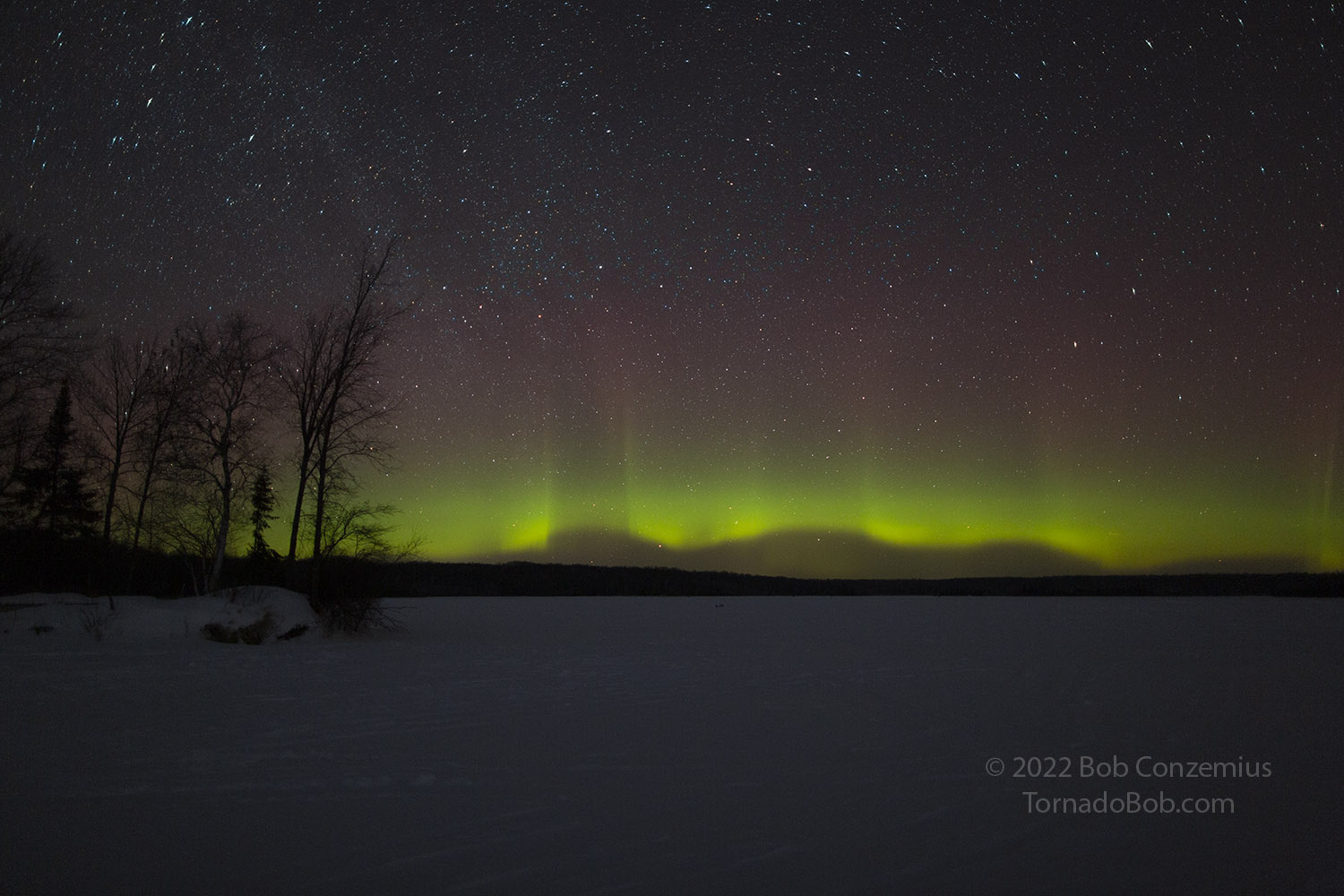 |
| Auroras with an undulating structure. |
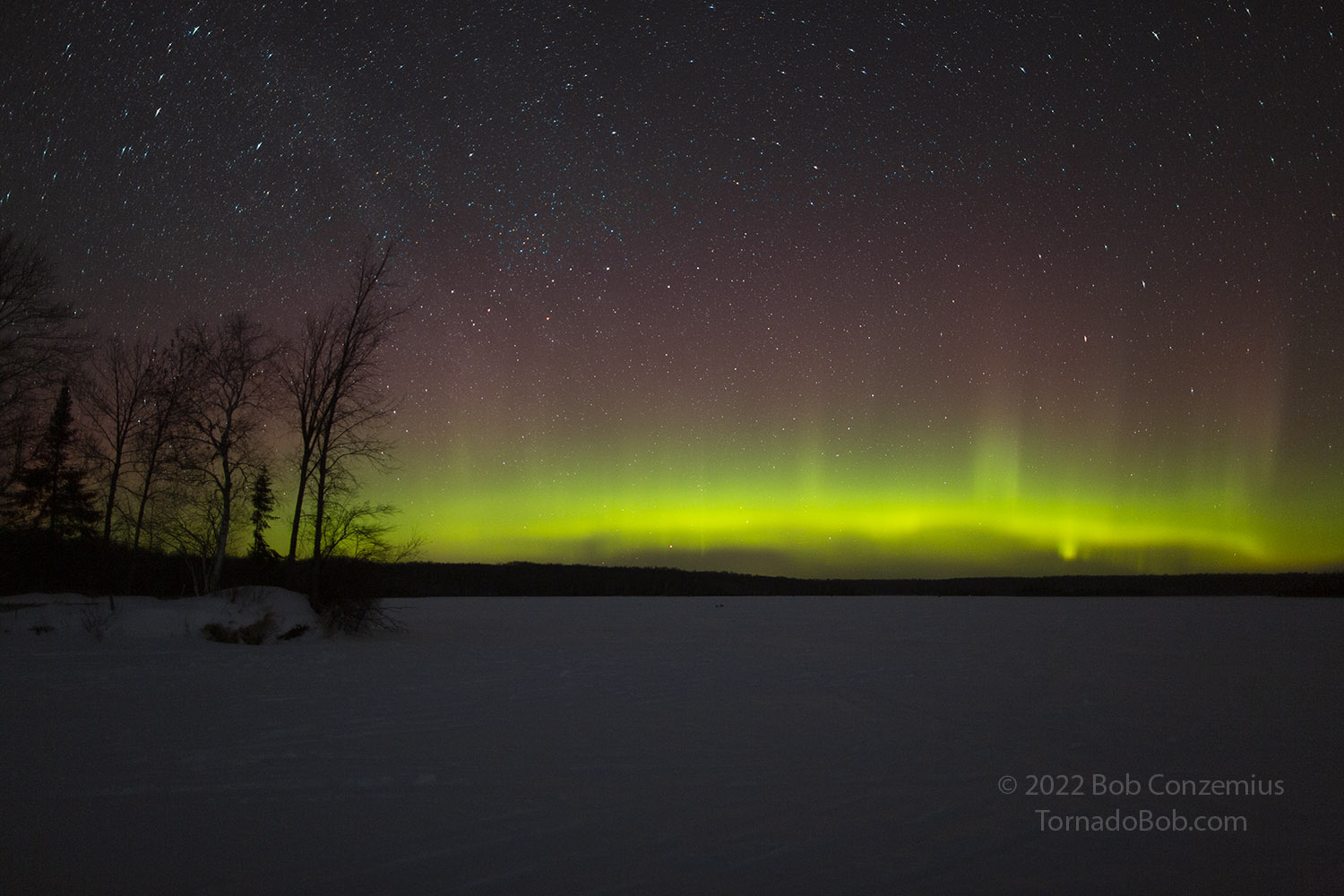 |
| It looks like a substorm is developing. |
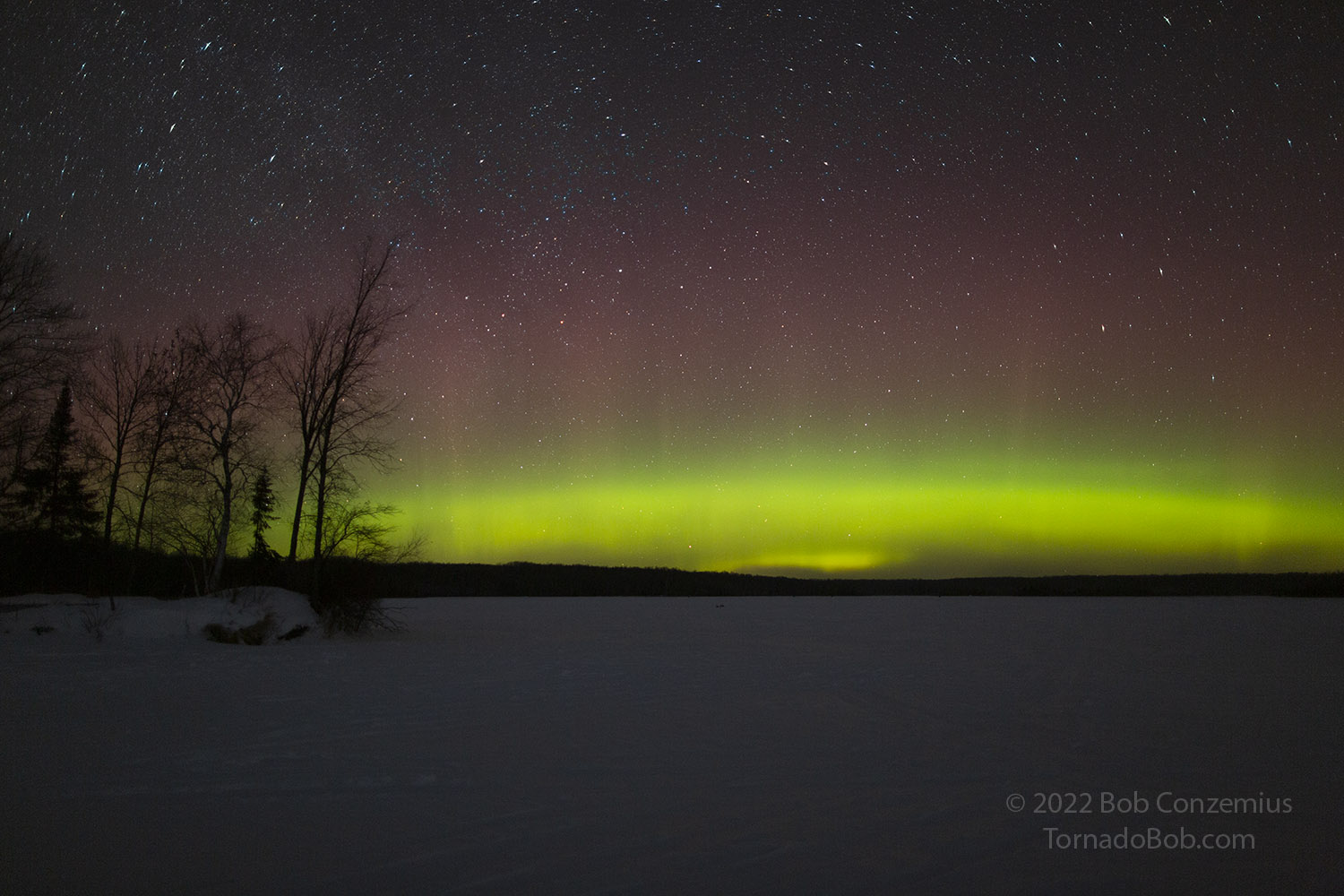 |
| There is also some brightening on the far northern horizon. |
 |
| I also tried to take some shots at 50mm focal length, but the auroras faded. |
I shot for a few minutes and, given the location of the auroras close to the horizon, I decided to try my 24-70mm zoom lens set at 50mm, but the auroras faded. This part of the night was a little mysterious. After things appeared to be ready to go pretty strongly, the lights mostly just shut off, even as Bz continued to drop south. I didn't mind this a whole lot. I hopped back in the car and closed my eyes for a bit. Bz continued to get increasingly far south, and after another hour it was at -18 nT. A persistent value that low could bring the auroras overhead. I'd open my eyes and look outside from time to time and was sure each tiny brightening I saw was the start of the expanding show, but it kept fooling me, and the lights dimmed repeatedly.
Finally, after at least 30 minutes of Bz near -18, I figured it had to be getting better. I looked again and observed that the auroras had gone into their "diffuse blob" mode. There were no vertical columns and no well-defined arcs of steady green. The auroras were just diffuse blobs that brightened and dimmed on a five to ten second timescale. However, a few minutes later, part of this field of blobs, closer to the horizon, started to glow a brighter, steadier green. Finally, the negative Bz was having an effect.
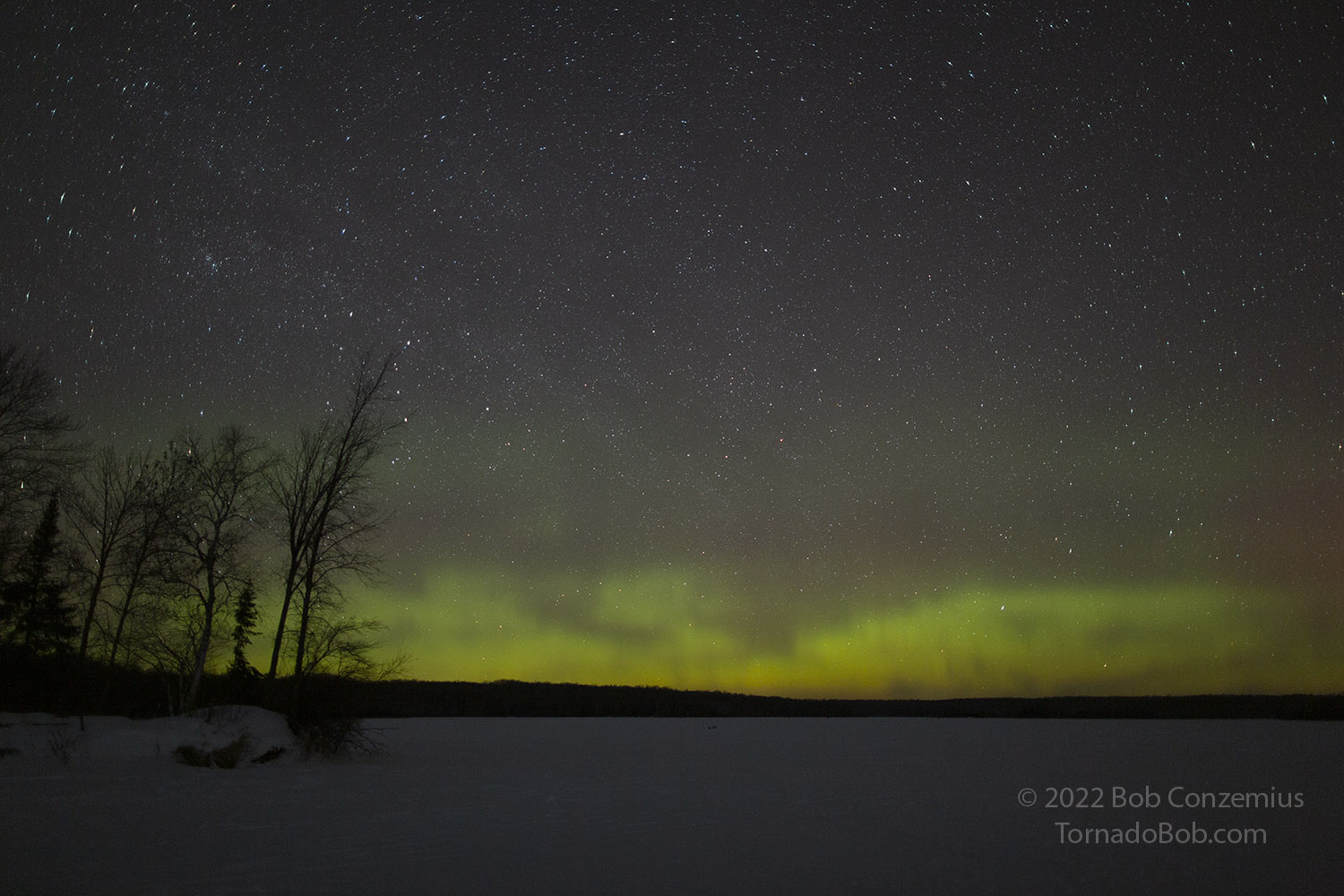 |
| The diffuse blobs of aurora. |
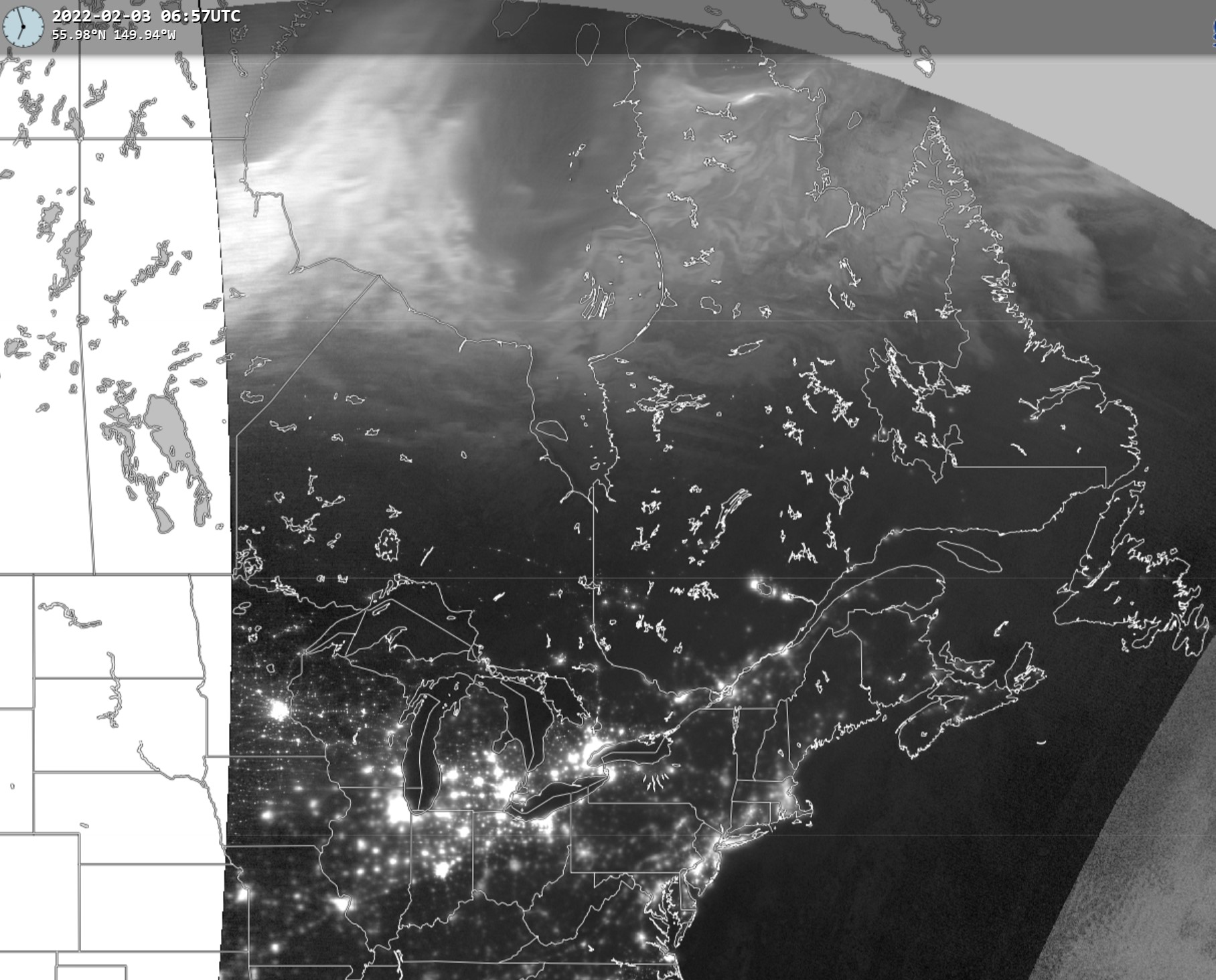 |
| The VIIRS imagery just before 1:00 AM local time showed rather dim auroras, and the oval was pretty far north. |
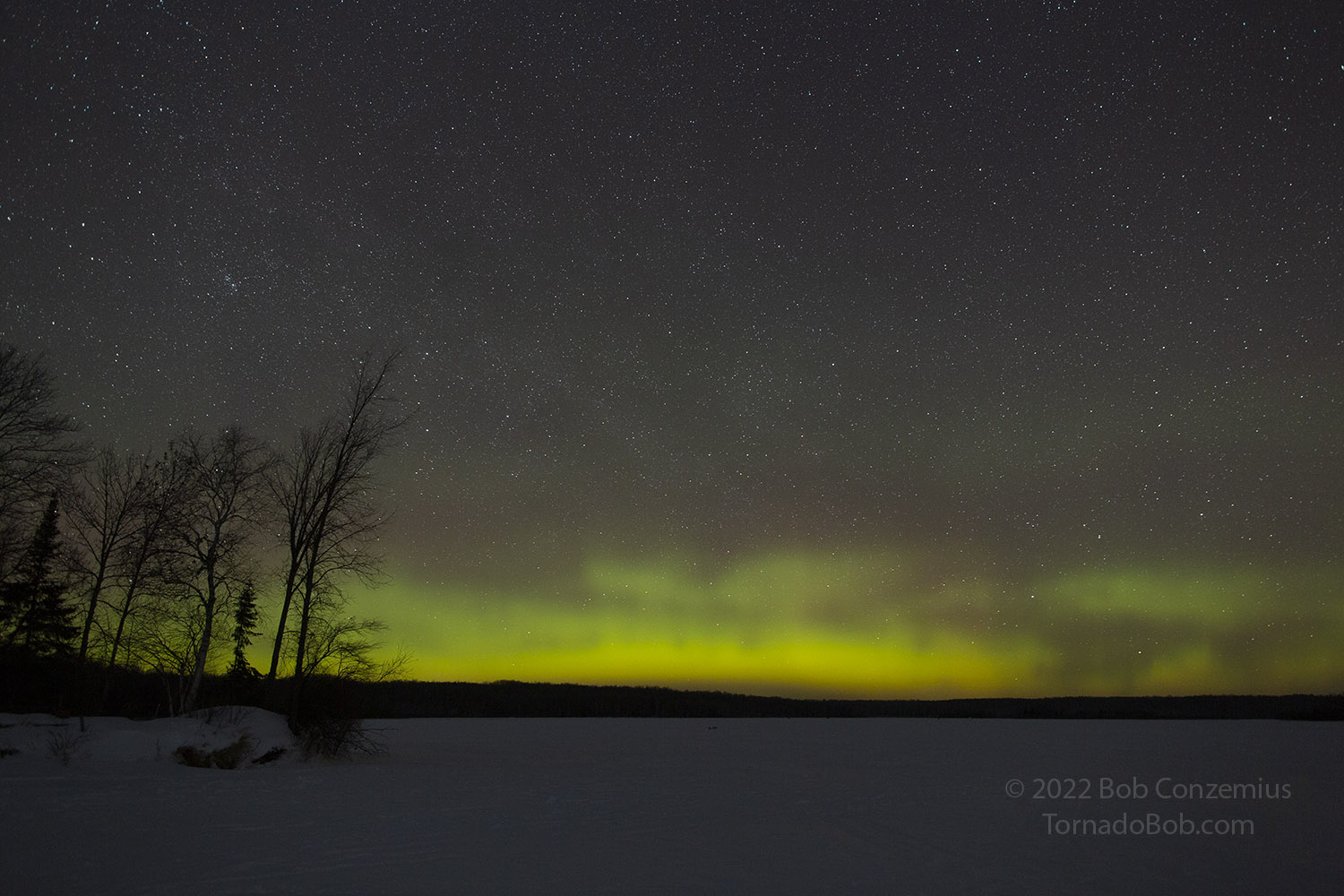 |
| A part of the blob field near the horizon starts to brighten. |
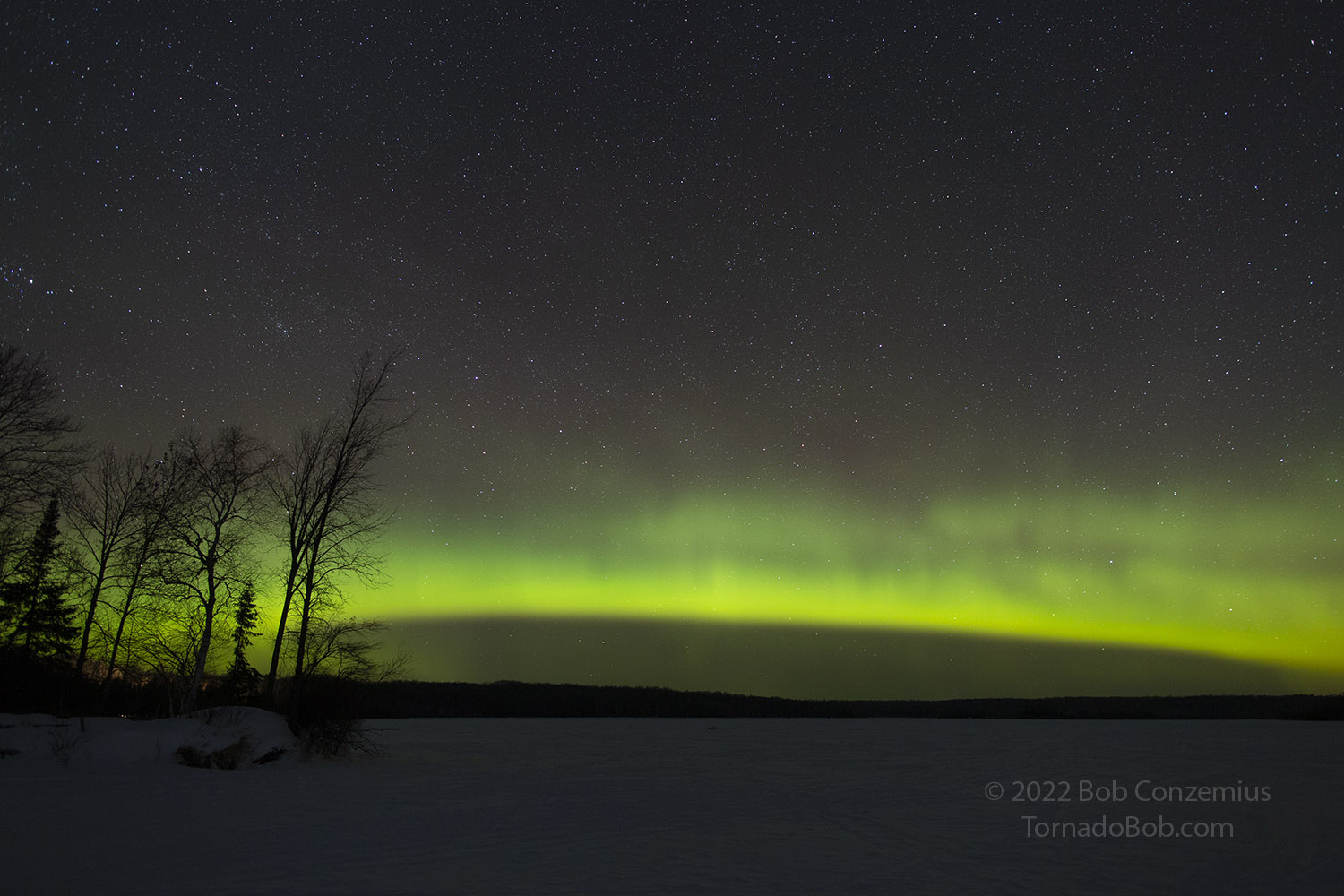 |
| The arc is now a lot brighter and pretty fully formed. |
 |
| I also shot with the 16-35mm lens at 16mm. It shows some "dunes" auroras on the right. |
I shot a bit more frequently as the steady auroral arc took shape and then advanced from the northern horizon. It was still less than ten degree above the horizon, which seemed pretty low for Bz of -18 nT, but at least it was brightening. I continued to shoot and wait. At about 1:30 AM, the substorm started. Interestingly, the substorm was coincident with an overpass of the Suomi NPP satellite, which has a VIIRS instrument on it that scans for auroras. It produced an image that really closely corresponds to what I have in my pictures. You can see it below.
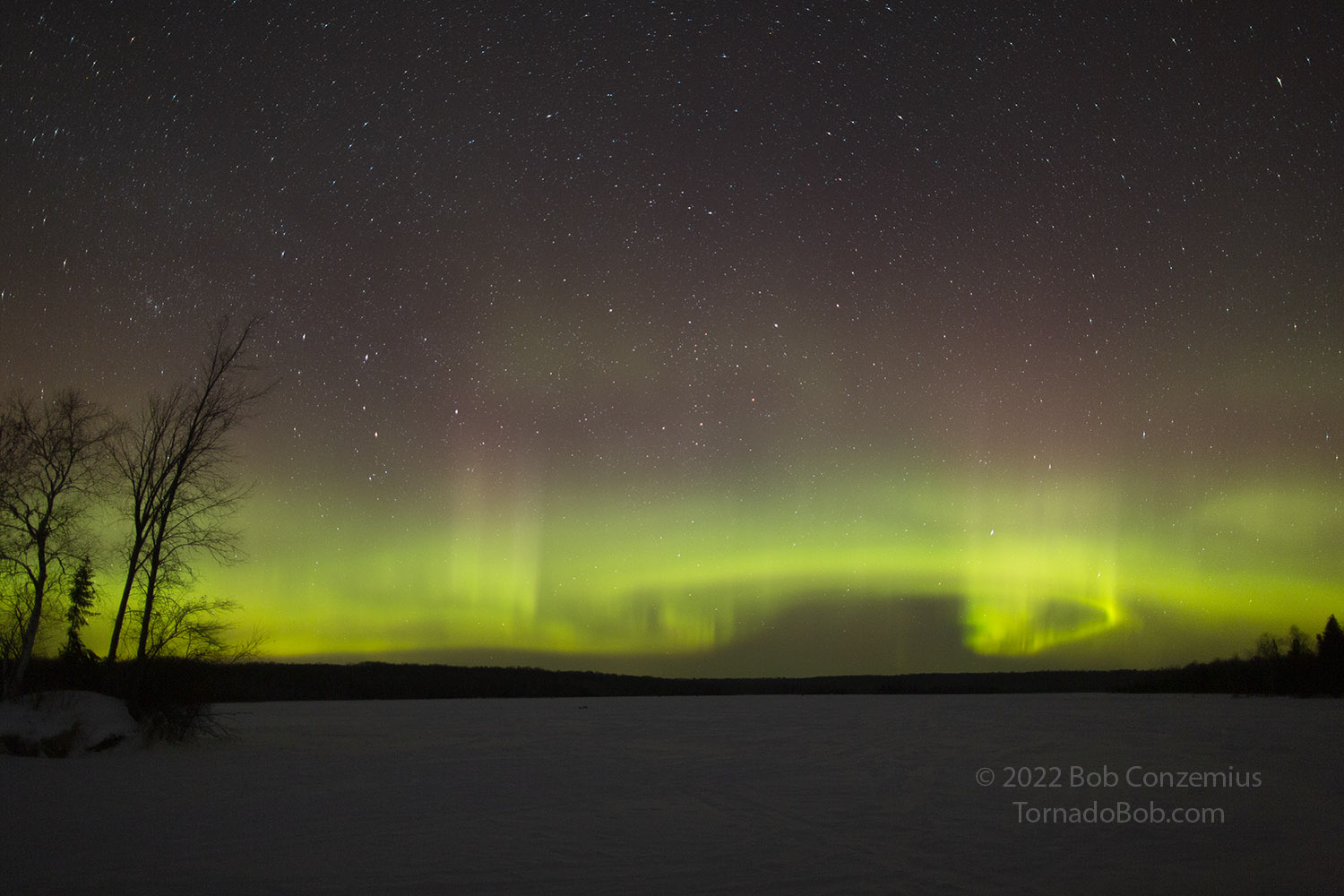 |
| The auroral substorm is now in progress. |
 |
| This is the frame that most closely matches the Suomi NPP VIIRS image. |
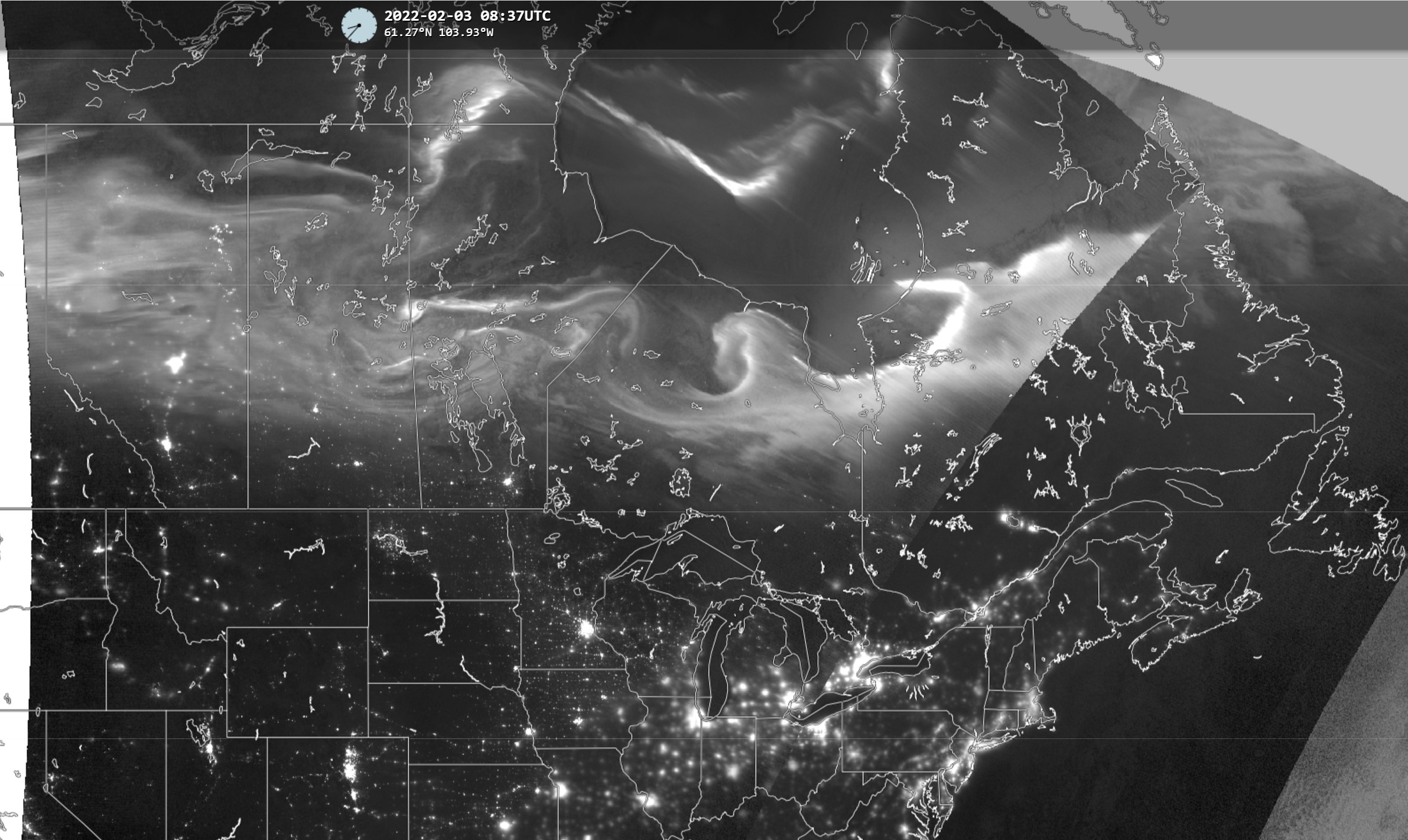 |
| Suomi NPP VIIRS image from when I took the above shot. |
 |
| Shot at 16mm. The "dunes" auroras are getting pretty high in the sky. |
I left for home about 3:15 or 3:30 after the auroras had dimmed. I arrived home just before 4:00, set up my camera to download pictures, and went to bed. The auroras apparently brightened again soon afterward because VIIRS imagery at 4:21 showed a slightly brighter band a little farther south than the one I shot just before 3:00 AM.
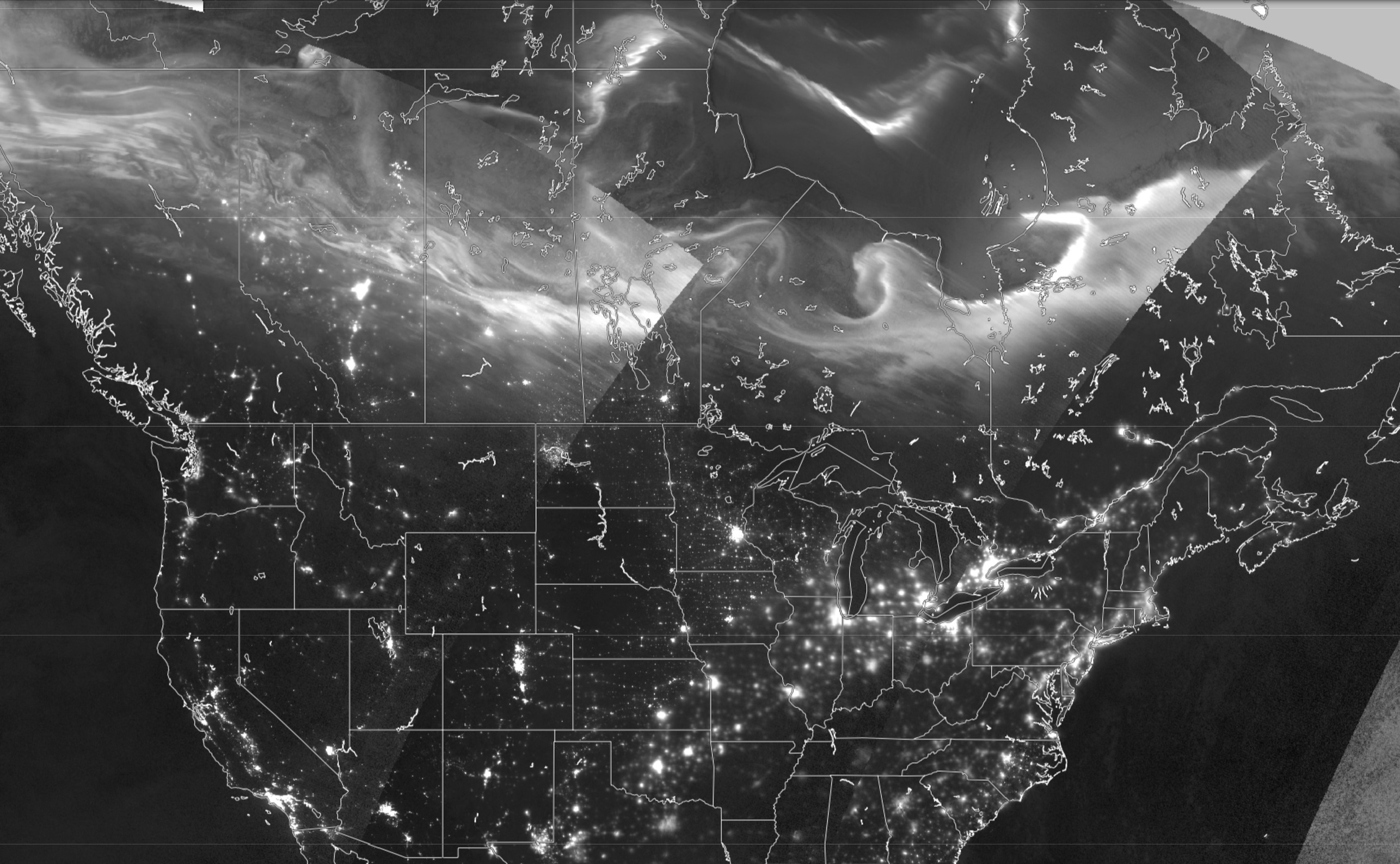 |
| The VIIRS imagery at 4:21 AM local time showed some brighter auroras farther south (see the left half of the image). |
Back to Auroras | Home













